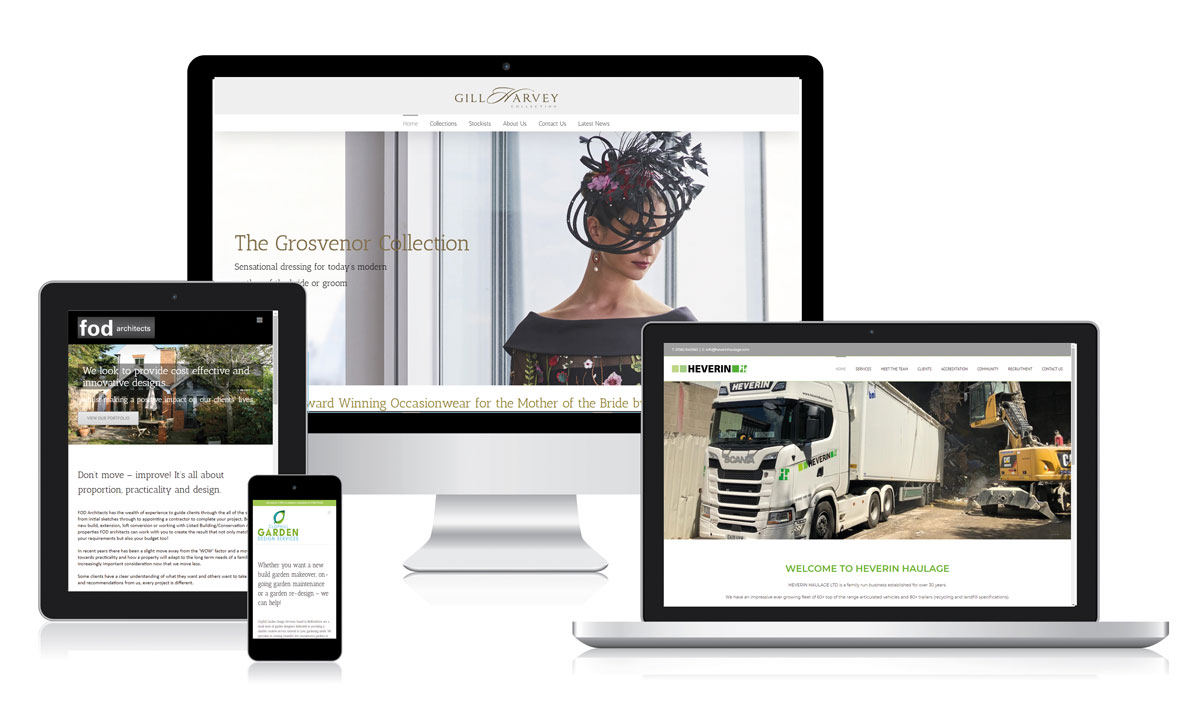Key Factors to Consider When Planning Your Website Design
Key Factors to Consider When Planning Your Website Design
Blog Article
The Ultimate Guide to Modern Internet Site Design Trends
In the ever-evolving electronic landscape, modern-day web site style fads play an important function in shaping customer experience and involvement. From the surge of minimal design principles that prioritize simpleness to the influence of bold typography in defining brand identification, each aspect contributes to a natural online presence.
Minimalist Style Concepts
Minimal style principles emphasize the idea that much less is more, promoting for simplicity and capability in visual communication. This method strips away unnecessary aspects, focusing rather on important parts that communicate the desired message properly. By focusing on quality, minimalist layout enhances customer experience, allowing visitors to browse web sites effortlessly.
Core tenets of minimalist layout include the use of enough white area, which develops a feeling of balance and company. This unfavorable space not just directs the visitor's attention to key components but also promotes a calming visual environment. In addition, a minimal shade palette is usually used, utilizing soft shades or single plans to maintain aesthetic cohesion and stop overwhelming the user.
Typography plays a vital function in minimal layout, where readable font styles are selected for their simpleness and effectiveness in interacting material. Ultimately, minimal layout concepts cultivate a focused atmosphere that urges users to involve with the material, boosting the general effectiveness of contemporary website layout.
Bold Typography Options
Accepting vibrant typography choices has actually become a specifying characteristic of contemporary website layout, as it effectively catches interest and communicates solid messaging. Developers are significantly utilizing typography not merely as a functional aspect but as a key visual component that enhances the overall aesthetic and user experience.

Additionally, the association of vibrant typography with minimalist design concepts permits striking contrasts, enhancing readability while keeping aesthetic allure. Making use of whitespace around strong text better emphasizes its relevance, making sure that the message reverberates with the audience.
As electronic landscapes end up being extra affordable, leveraging strong typography enables brands to separate themselves and leave a long lasting perception. The careful option of font styles and their application can stimulate emotions, develop tone, and drive action, making strong typography an important device in modern web site layout. Eventually, it is an effective means to improve narration and make certain that vital messages are not only seen however likewise really felt.
Mobile-first and receptive Design
Receptive and mobile-first layout has actually become an important concept in modern-day site growth, mirroring the increasing reliance on mobile phones for accessing online material. As user behavior shifts in the direction of mobile surfing, developers have to prioritize developing experiences that adapt perfectly throughout numerous screen dimensions and resolutions.
A receptive layout makes certain that a web site instantly readjusts its format, pictures, and performance based upon the tool being utilized. This technique boosts user experience by offering consistent navigation and readability, regardless of whether the visitor is on a tablet computer, smart device, or desktop computer computer. Moreover, mobile-first design advocates for developing websites originally for smaller sized displays, ultimately scaling as much as larger screens. This method motivates an extra streamlined and reliable layout process, concentrating on essential web content and functionality first.
Carrying out responsive and mobile-first concepts not just satisfies individual preferences but also lines up with seo (SEO) practices. Significant internet search engine, like Google, prioritize mobile-friendly web sites in their rankings, making it critical for companies to adopt these design methods. In an affordable digital landscape, welcoming responsive and mobile-first layout is not just an alternative; it is important for making certain ease of access and interaction with a varied target market.
Involving Microinteractions
Microinteractions play a crucial role in enhancing customer involvement and general site experience, especially in the context of mobile-first and receptive design. These subtle style elements offer immediate responses to customers, making communications a lot more satisfying and user-friendly. Examples consist of button animations, notification informs, view website and filling indications, which not only overview individuals yet also create a feeling of connection with the interface.
Integrating engaging microinteractions can significantly improve use by lowering cognitive lots. When customers receive visual or auditory responses upon carrying out activities, such as clicking a switch or sending a kind, they really feel more positive in their options. This promotes a smoother navigation official website experience, ultimately raising individual retention.

As website style fads remain to develop, the relevance of microinteractions can not be overstated. They offer as the subtle yet effective touchpoints that change ordinary interactions into amazing experiences, thus raising the total performance of contemporary website design.
Lasting Website Design Practices
Sustainable website design practices are becoming significantly essential as the digital landscape grows and environmental concerns rise. Developers and programmers are recognizing their responsibility to develop web sites that not just serve individual demands yet additionally lessen ecological influence. This strategy encompasses a number of crucial methods.
Firstly, optimizing power usage is paramount. Websites ought to be made to fill swiftly and effectively, which decreases server power use and improves customer experience. Methods such as image compression, decreasing HTTP demands, and using modern-day coding techniques contribute considerably to this objective.
Second of all, choosing eco-friendly organizing providers is critical - website design. Several hosting firms are now powered by eco-friendly power sources, enabling web sites to operate in an extra sustainable fashion. This option mirrors a commitment to decreasing carbon impacts
Moreover, adopting a minimal design can enhance sustainability. Fewer components on a page cause less data transfer, which not only quickens loading times yet also conserves resources.
Last but not least, advertising digital availability ensures that web sites reach a bigger audience without unneeded bloat, aligning individual experience with ecological obligation. By incorporating these sustainable methods, internet designers can add favorably to both customer involvement and the world's health.
Verdict
In summary, contemporary site layout patterns emphasize the combination of minimalist principles, bold typography, and receptive style to improve customer experience. Adopting these trends is essential for creating impactful electronic experiences that resonate with users in a significantly competitive on-line landscape.
In the ever-evolving digital landscape, contemporary site design trends play an important role in forming user experience and involvement. By prioritizing clearness, minimal layout enhances customer experience, permitting visitors to browse sites easily.
Ultimately, minimalist layout principles grow a focused setting that urges users to involve with the material, boosting the total efficiency of modern web site style.Microinteractions play a critical duty in improving individual engagement and overall website experience, specifically in the context of mobile-first and receptive layout.In summary, modern site design patterns stress the combination of minimalist principles, vibrant typography, and you can try here receptive layout to enhance customer experience.
Report this page